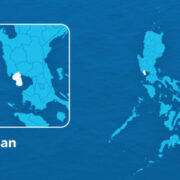Lower rice prices coming in 2025–think tank

Global rice prices are projected to decline next year following India’s lifting of rice export ban and favorable weather conditions amid looming La Niña.
In an emailed commentary, Fitch group subsidiary BMI said it had lowered its average rice forecast to $14.20 per hundredweight (cwt) for Chicago Board of Trade (CBOT)-listed second-month rough rice futures in 2025. It noted that the previous projection of $14.85 per cwt was “too bullish” given the recent market conditions.
It also retained its price forecast for CBOT-listed second-month rough rice futures this year at $16.35 per cwt.
BMI attributed the reduced global price estimate to India’s resumption of rice exports and an anticipated global record harvest.
“The international rice sector is set to loosen in [2025], which, along with increased export supplies from India, will see average price levels decline,” BMi said in its emailed commentary.
It pegged international rice production at 534 million metric tons in 2025, higher than its estimate of 521 million MT for this year.
“We expect that the global rice sector will remain in surplus throughout our forecast period, following the generation of two rare consecutive deficits in [2022] and [2023],” the research firm said.
It also cited India’s record harvest and the expected positive effect of the anticipated mild La Niña event on rice production in Southeast Asia in the fourth quarter of this year.
The Department of Agriculture (DA) said on Monday that imports could surpass 4 million MT in 2024 as successive typhoons caused extensive damage to local harvests, including the staple food.
The volume of Philippine rice imports may reach or exceed more than 4 million metric tons by the end of this year, Agriculture Assistant Secretary Arnel de Mesa said in an interview.
Despite the massive impact of typhoons such as Severe Tropical Storm “Kristine” and Supertyphoon “Leon” to the farm sector, pegged at more than P10 billion, De Mesa said retail rice prices may stabilize due to increased rice purchases from abroad.
“Bagamat malaki yung losses sa rice but this can be easily compensated nung ating importation (Although the rice sector sustained substantial losses, this can be easily compensated by our importation),” De Mesa said.
And it’s possible that the volume would increase further because the bulk of imports would arrive during the last quarter, he told reporters.
De Mesa also said the reduced import duties on rice and the continued decline in global rice prices would bode well for the country, creating stability in volume and retail prices.
So far, the country imported 3.896 million of rice between January and Nov. 7 this year, with nearly 80 percent coming from Vietnam, according to the Bureau of Plant Industry.
The volume already breached the record-high import volume of 3.83 million MT in 2022 and last year’s 3.6 million MT.
Furthermore, the figure was about a million metric ton away from the US Department of Agriculture’s recent estimate of 5 million MT for this year.





















